Key
| Key |
The transponder identification is used for:
| • |
Electronic start interlock (immobilizer).
|
|
| • |
Central locking system, unlocking from TSL activated to unlocked position.
|
|
| • |
Disarming anti-theft alarm.
|
|
| • |
Theft protection, audio system.
|
|
| Locking all doors |
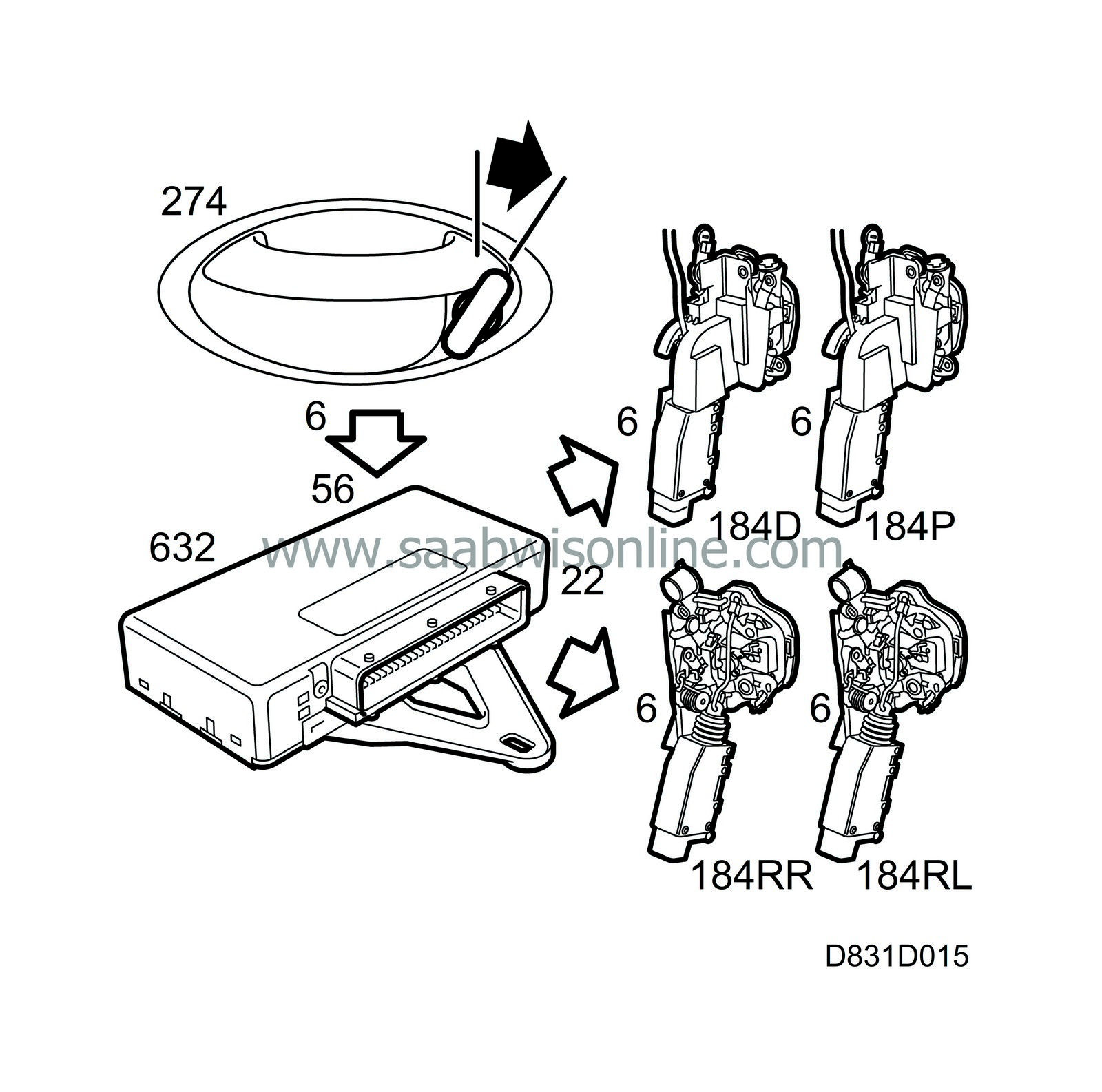
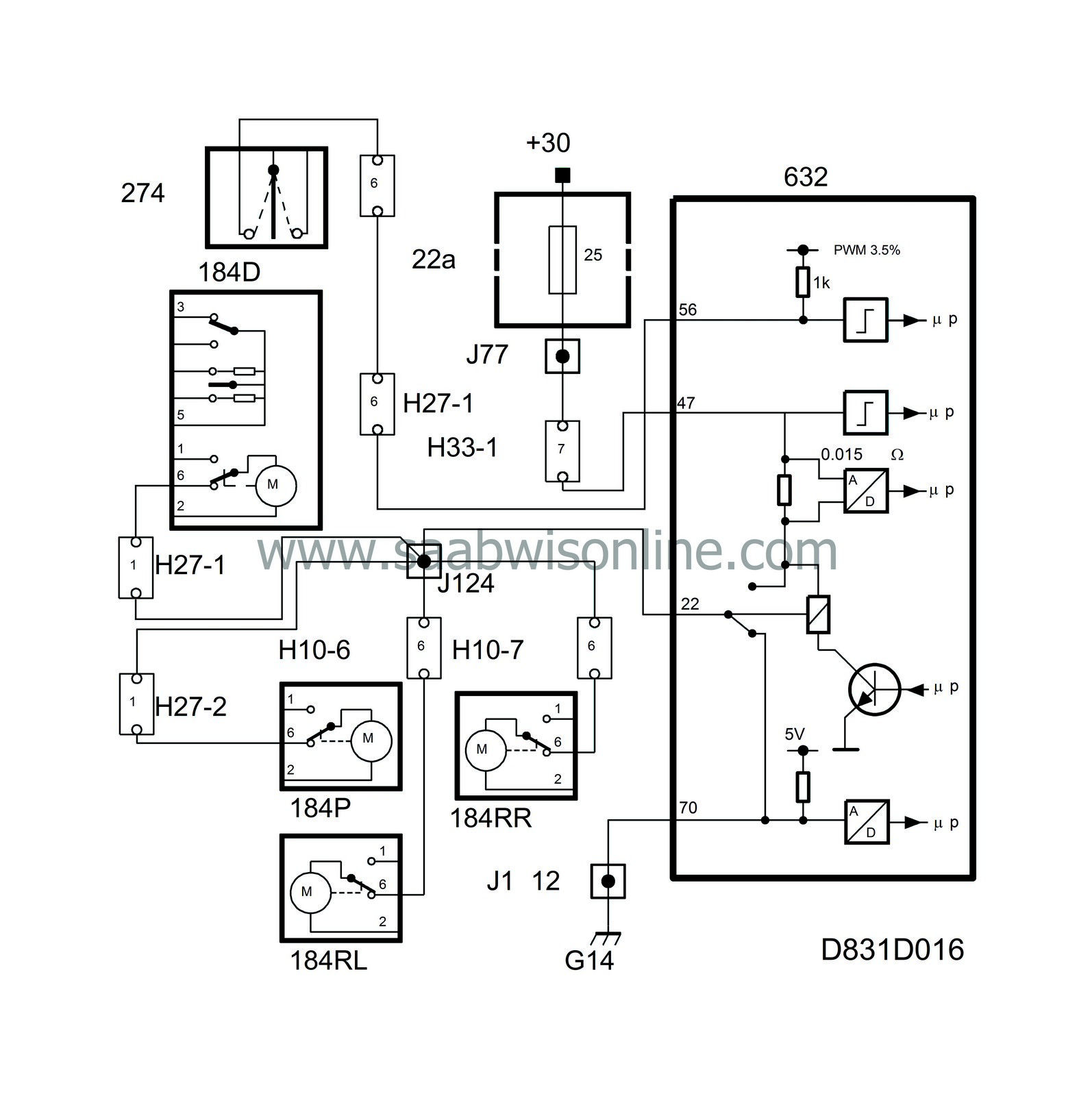
The central locking system can be operated with the key from the driver's door.
All doors can be locked by turning the key once clockwise (LHD) or anticlockwise (RHD).
When the key is turned in the lock, a microswitch in the lock unit closes, microswitch pin 6 is grounded and accordingly pin 56 of the TWICE control module is also grounded.
A short voltage pulse is fed from control module pin 22 to the lock motors in the doors, and the doors lock.
The lock motors are grounded in the TWICE control module on:
| • |
Pin 26 and 42, driver's door (5D, 3D and Convertible)
|
|
| • |
Pin 66 and 69, passenger door (5D, 3D and Convertible)
|
|
| • |
Pin 49 and 20, rear doors (5D)
|
|
| Unlocking all doors |
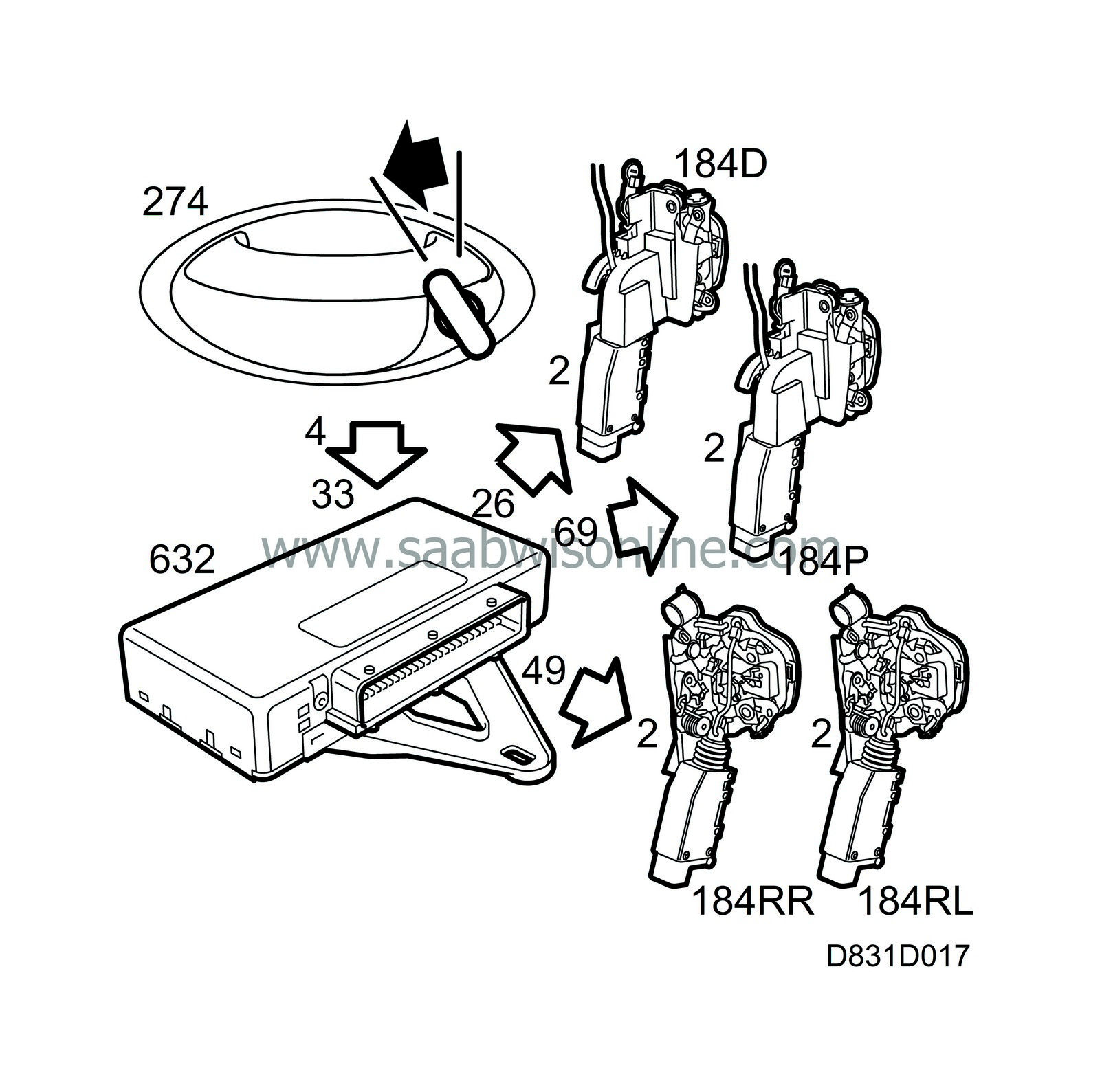
To unlock, turn the key once anticlockwise (LHD) or clockwise (RHD).
When the key is turned in the lock, a microswitch is closed and the lock unit is grounded to microswitch pin 4 and accordingly pin 33 (driver's door LHD) or pin 8 (driver's door RHD) of the TWICE control module is also grounded.
The TWICE control module outputs a short voltage impulse from the following pins:
| • |
26 to lock motor, driver's door (5D, 3D and Convertible)
|
|
| • |
69 to lock motor, passenger door (5D, 3D and Convertible)
|
|
| • |
49 to lock motors, rear doors (5D)
|
|
The lock motors are grounded in the TWICE control module on:
| • |
42 and 22, driver's door lock motor (5D, 3D and Convertible)
|
|
| • |
66 and 22, passenger door lock motor (5D, 3D and Convertible)
|
|
| • |
20 and 22, rear door lock motors (5D)
|
|
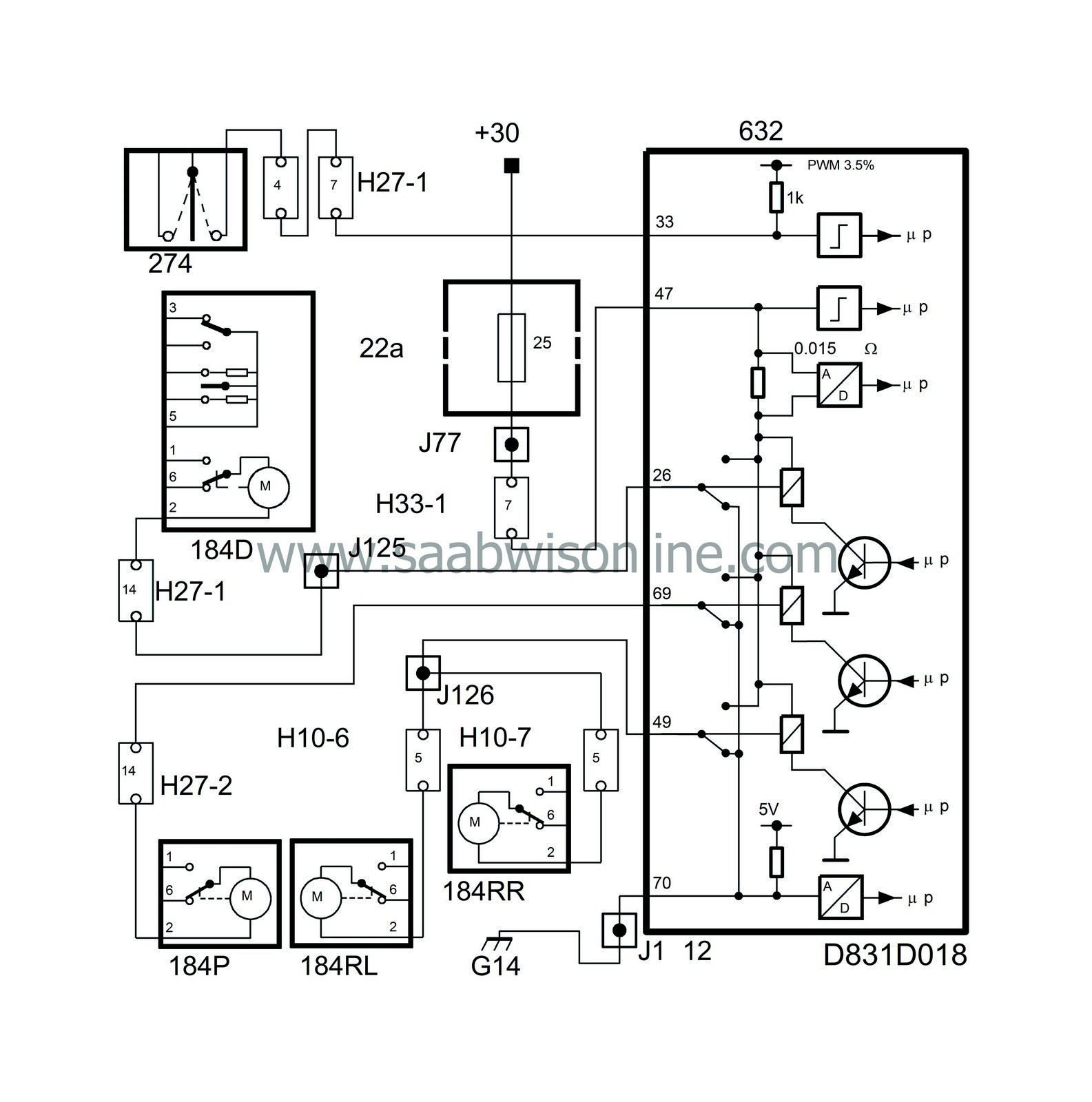
| Activating TSL with the key (Not US/CA) |
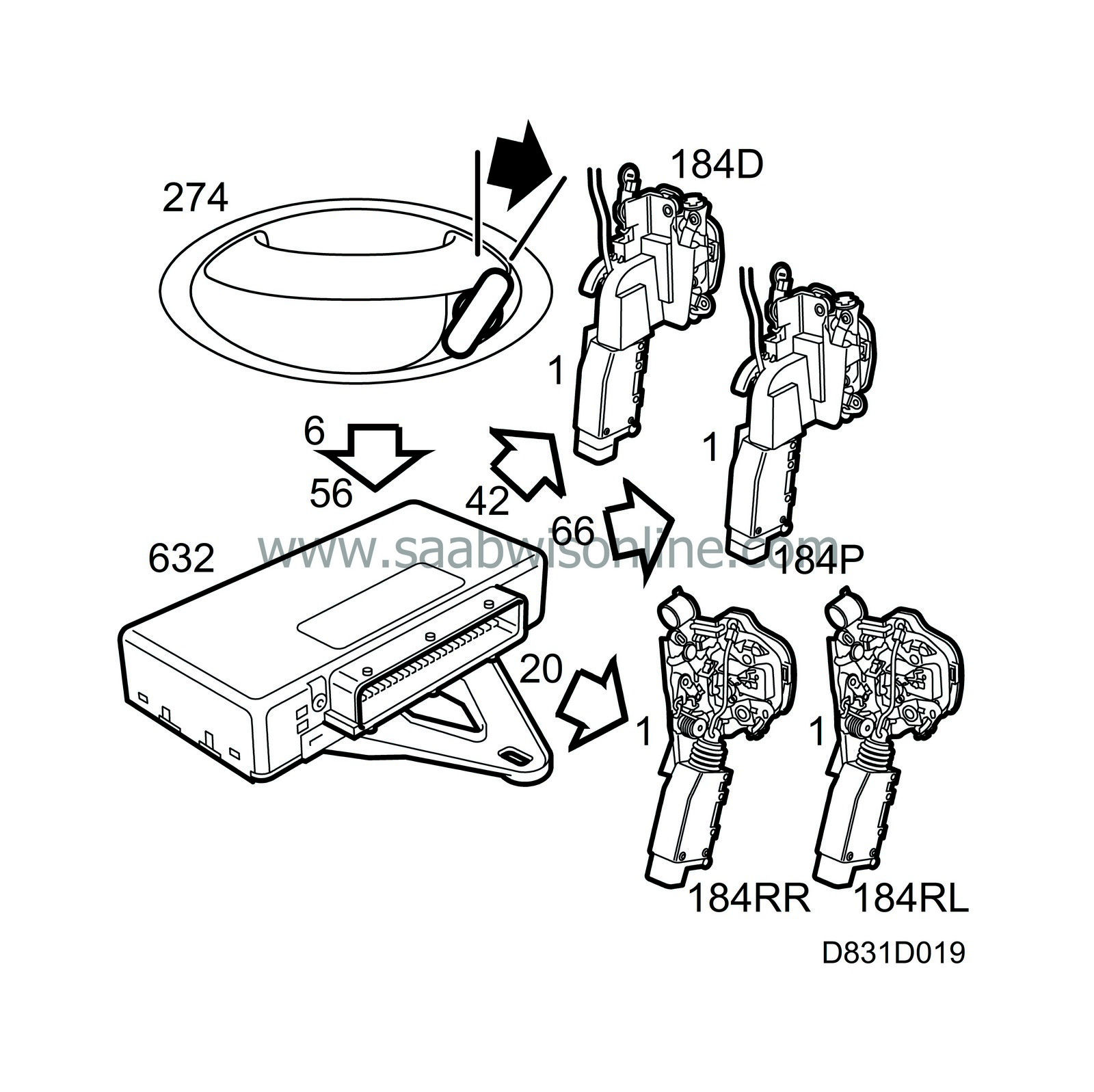
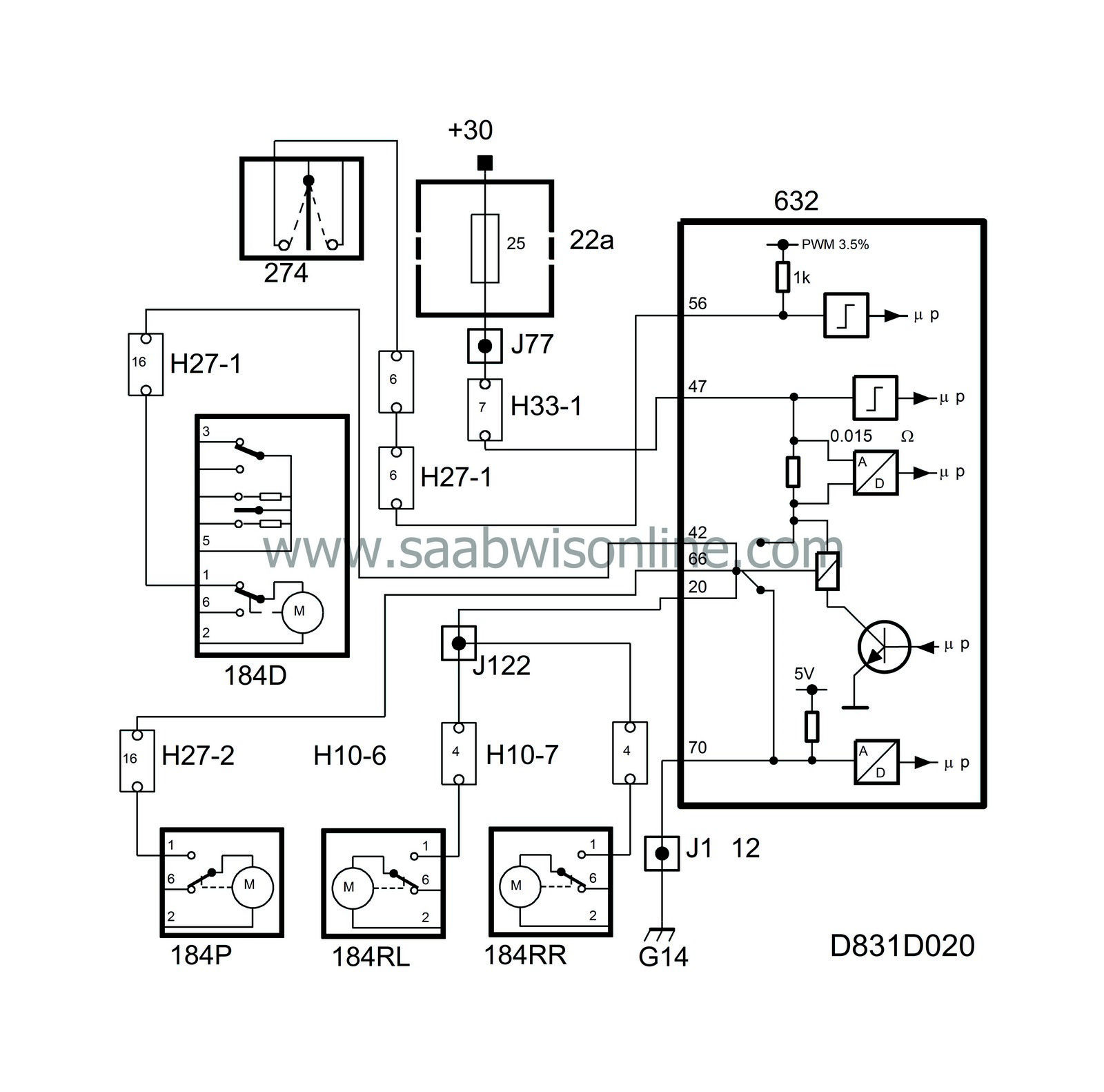
TSL is activated by turning the key twice within a 5 second interval. The car is locked by turning the key clockwise (driver's door LHD) or anticlockwise (driver's door RHD). Locking is confirmed by the horn sounding.
On the first turn of the key, all doors are locked by the central locking system, see section “Locking all doors”.
When the key is turned for the second time within the five second interval, the microswitch by the lock cylinder closes for a second time and pin 6 is grounded. This causes pin 56 (driver's door LHD) or pin 32 (driver's door RHD) of the TWICE control module to ground. The TWICE control module sends a short electrical impulse to the lock motors from:
| • |
Pin 42, driver's door (5D, 3D and Convertible)
|
|
| • |
Pin 66, passenger door (5D, 3D and Convertible)
|
|
| • |
Pin 20, rear doors (5D)
|
|
| • |
Pin 22, to all doors to ensure that all lock motors have moved to their end positions (5D, 3D and Convertible)
|
|
The lock motors are grounded in the TWICE control module on:
| • |
Pin 26, driver's door (5D, 3D and convertible)
|
|
| • |
Pin 69, passenger door (5D, 3D and Convertible)
|
|
| • |
Pin 49, rear doors (5D)
|
|
| Inactivating TSL with the key (Not US/CA) |


TSL can be inactivated using the key in the driver's door.
Turning the key once anticlockwise (driver's door LHD) or once clockwise (driver's door RHD) unlocks all the doors. The tailgate/bootlid returns to central locking status.
When the key is turned in the lock, a microswitch is closed and the lock unit is grounded to microswitch pin 4 and accordingly pin 33 (driver's door LHD) or pin 8 (driver's door RHD) of the TWICE control module is also grounded.
The TWICE control module outputs a short voltage impulse from the following pins:
| • |
26 to lock motor, driver's door (5D, 3D and Convertible)
|
|
| • |
69 to lock motor, passenger door (5D, 3D and Convertible)
|
|
| • |
49 to lock motors, rear doors (5D)
|
|
The lock motors are grounded in the TWICE control module on:
| • |
42 and 22, driver's door lock motor (5D, 3D and Convertible)
|
|
| • |
66 and 22, passenger door lock motor (5D, 3D and Convertible)
|
|
| • |
20 and 22, rear door lock motors (5D)
|
|
| Separate unlocking with key (US/CA) |
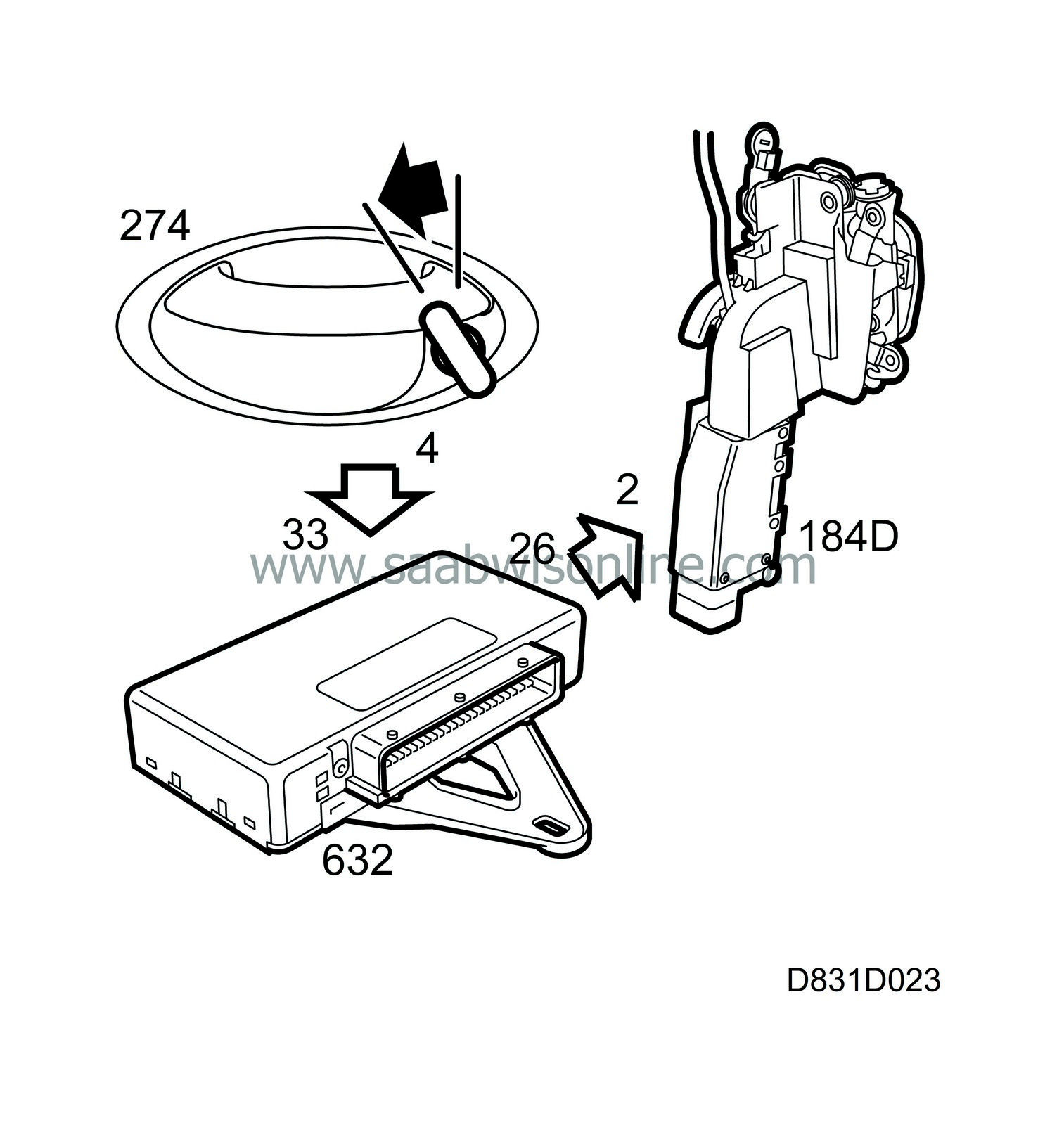
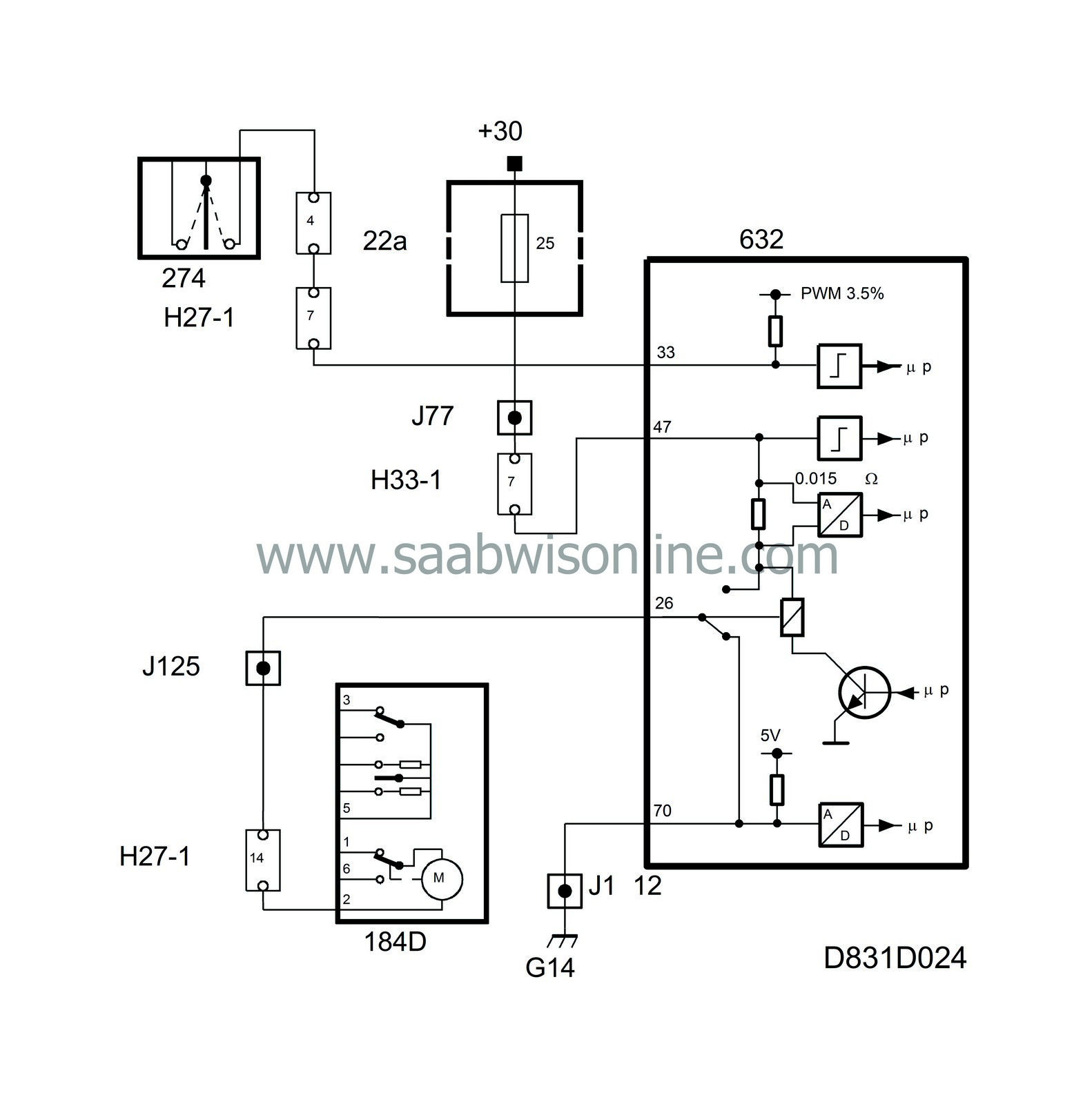
Cars on the US and CA markets are equipped as standard with a function allowing the driver's door to be unlocked separately. This function can also be programmed on other markets.
Only the driver's door is unlocked when the key is turned clockwise (driver's door LHD) or anticlockwise (driver's door RHD) for the first time.
When the key is turned, the microswitch by the lock cylinder closes and pin 4 is grounded. Pin 33 (driver's door LHD) or pin 8 (driver's door RHD) of the TWICE control module is then grounded.
A short voltage pulse is fed from control module pin 26 (driver's door LHD) or pin 69 (driver's door RHD) to the lock motor.
The lock motor is grounded in the TWICE control module by:
| • |
Pin 42 and 22, driver's door (5D, 3D and Convertible)
|
|
| • |
Pin 66 and 22, front passenger door (5D, 3D and Convertible)
|
|
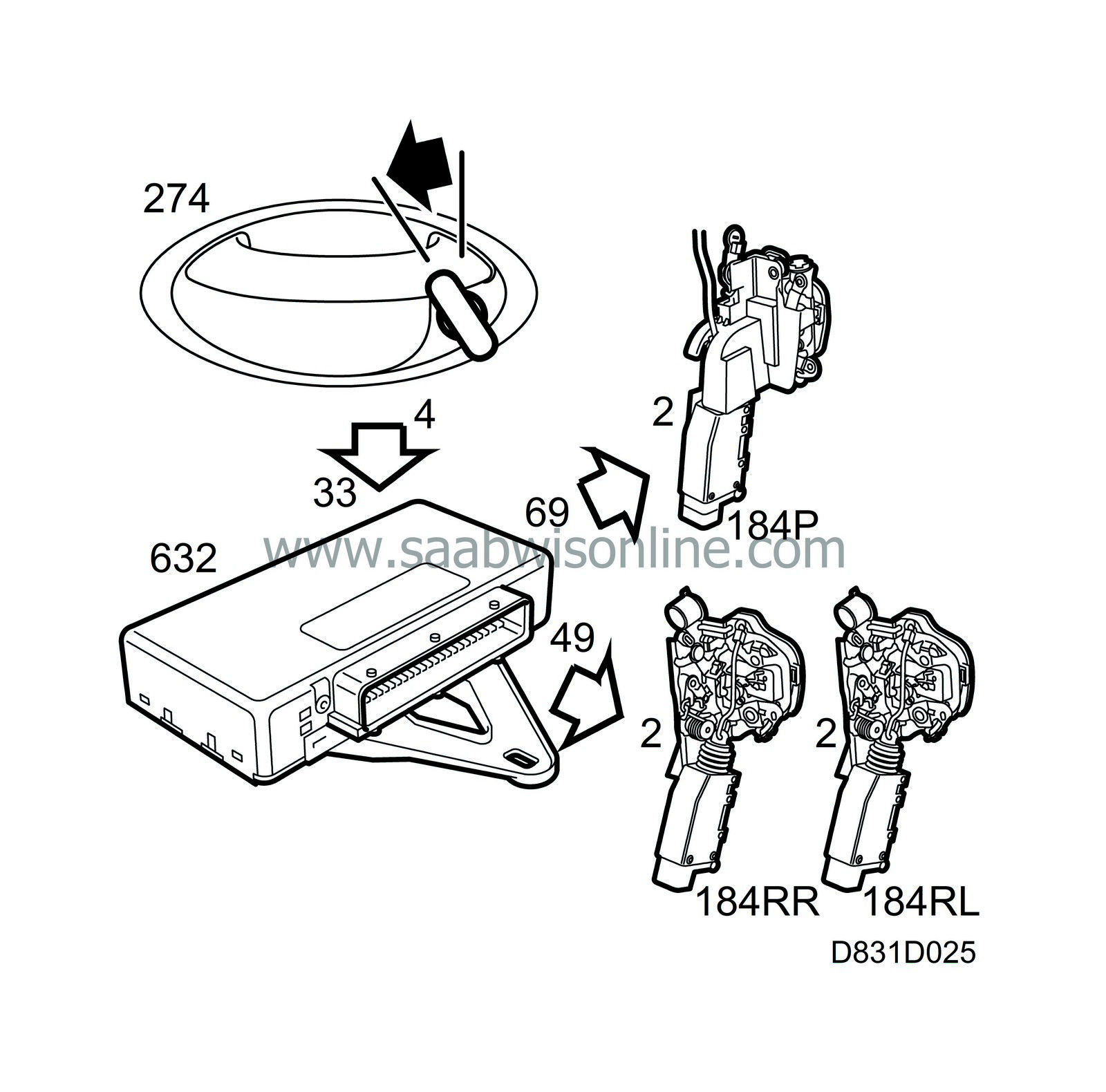
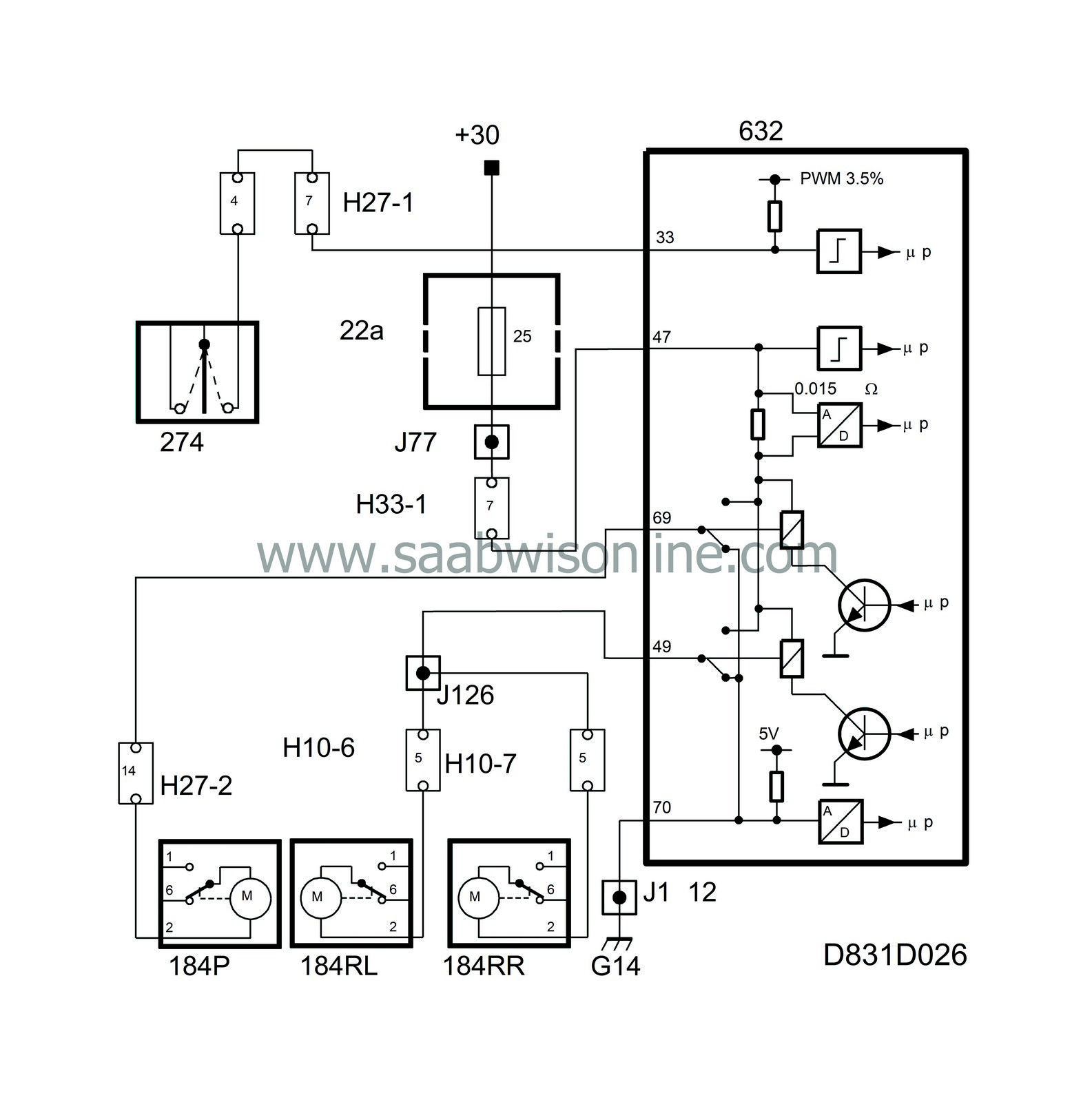
When the key is turned for a second time, the microswitch by the lock cylinder closes again and grounds pin 4, and thus pin 33 (driver's door LHD) or pin 8 (driver's door RHD) of the TWICE control module is grounded.
A short voltage impulse is fed to the lock motors from the TWICE control module pins:
| • |
Pin 69, front passenger door (5D, 3D and convertible)
|
|
| • |
Pin 26, driver's door (5D, 3D and convertible)
|
|
| • |
Pin 49, rear doors (5D)
|
|
The lock motors are grounded in the TWICE control module on:
| • |
Pin 66 and 22, front passenger door (5D, 3D and Convertible)
|
|
| • |
Pin 42 and 22, driver's door (5D, 3D and Convertible)
|
|
| • |
Pin 20 and 22, rear doors (5D)
|
|
| Diagnosis |
Diagnostic trouble code B2385 is set in the TWICE and P1460 in Trionic T7 if there is a fault with the transponder. No diagnostic trouble code is generated if the remote control is faulty.
P1460 is generated because the immobilizer function does not allow Trionic to close the fuel shut-off.
If the potential difference of the battery is less than 2.3 V for 10 successive presses of any of the buttons, "REPLACE KEY BATTERY" is displayed on the SID. If "REPLACE KEY BATTERY" is displayed, the battery should be changed at once to avoid operational disturbances, see Changing the key battery .
| Note | ||
|
B2385 and P1460 can be generated by other faults than problems with the transponder. |



